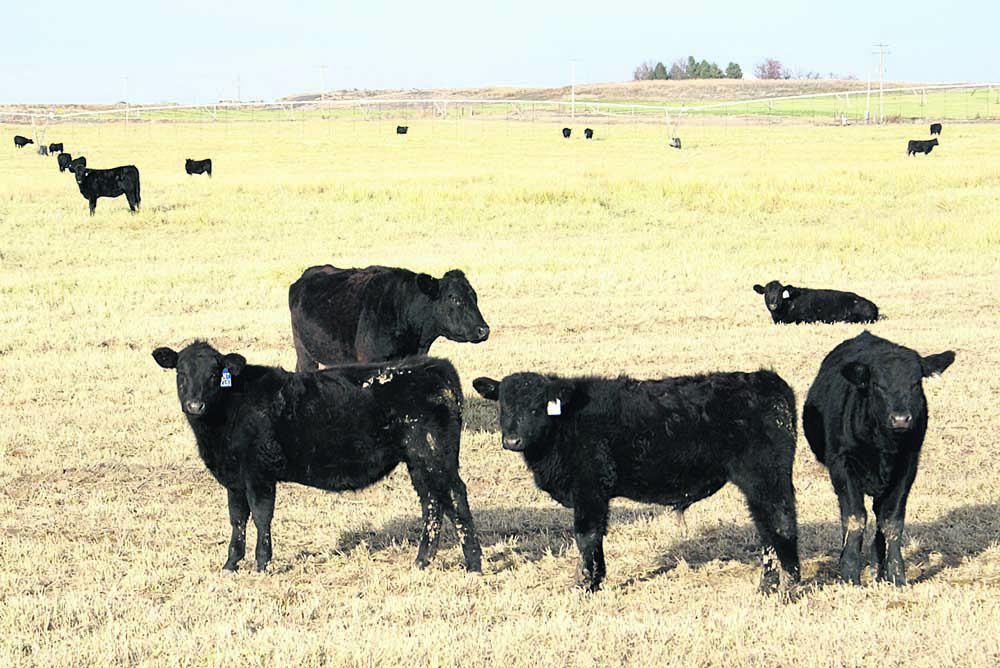USDA focuses on meat, poultry market competition
Published 9:00 am Thursday, July 15, 2021

- Cattle graze west of Eden, Idaho. A livestock expert says breaking up the four biggest beef processors would ultimately result in lower cattle prices.
USDA last week announced plans to address competition in meat and poultry markets by strengthening enforcement of the Packers and Stockyards Act, expanding processing capacity and opportunities for small processors and ensuring accurate origin labeling.
USDA Secretary Tom Vilsack said he was motivated to address issues in the meat and poultry sectors because 90% of American farms don’t generate the majority of income for the farmers who own them.
“To me that is a wake-up call and the need for us to focus on more, new and better markets,” he said during a virtual conference call on Tuesday.
That means markets that are more open, transparent, competitive and fair, he said.
Vilsack was joined by Sens. Chuck Grassley, R-Iowa, and Jon Tester, D-Mont., who have championed market reform.
Grassley said he’s long been working to fix anticompetitive practices in the industry and has been waiting for USDA secretaries and both Republican and Democratic administrations to take action.
“We want to beef up enforcement and expand transparency,” he said.
The actions USDA is taking fit in with his efforts to reform the cattle market through legislation, he said.
“I’ve raised concerns about the lack of transparency that’s making it hard for farmers to get a fair price,” he said.
Cattle producers are losing money on each head of cattle while packers are profiting up to $1,200 per head, he said.
“These farmers have every reason to be fed up with the anticompetitive practices in the marketplace,” he said.
The system is clearly broken when there’s high demand for beef and consumers are paying high prices while cattle producers are barely making ends meet, he said.
Tester said USDA’s efforts are a giant step in the right direction.
“We’ve seen rural America dry up, diminish, blow away and we asked ourselves why. And I can tell you the answer is pretty obvious to me. We don’t have competition in our marketplace and capitalism and markets depend upon competition and fairness to stay strong, and we just haven’t had that,” he said.
It hasn’t just impacted cow-calf producers and small and medium-sized feeders in particular, it’s also put the boots to consumers, he said.
“We need to make sure that we have competitive markets and fair prices,” he said.
It’s been clear for 50 or 60 years there aren’t competitive markets in the U.S. meat industry, he said.
“Right now there are four companies that control 80% of the meat processing in America. Man, oh man, it doesn’t take a statistician to figure out that there’s not a lot of competition in that system,” he said.
The meat industry is so consolidated that longtime family farms are having a hard time staying afloat, and consumers are seeing meat prices skyrocket, he said.
Expanding processing is a big step in the right direction because more capacity means more competition, he said.
“All people want in this marketplace is fairness. We don’t have that now,” he said.
That’s why he and Grassley have been working on bills to address the issue, he said.
There’s no silver bullet to fix the problems of consolidation in the meat industry, he said.
“But I will tell you that the steps that the USDA is taking are moving us in the right direction,” he said.
USDA has committed to:
– Clarifying what USDA considers a violation under the Packers and Stockyards Act and what is necessary to demonstrate harm to establish a violation, as well as addressing the payment system to poultry producers
– $55.2 million to help small processors comply with inspection requirements to sell across state lines
– $100 million for small processors to help defray inspection costs
– $500 million for grants and loans to help expand small and mid-size processing capacity
– Address voluntary labeling as to the origin of products, particularly “Product of USA”







